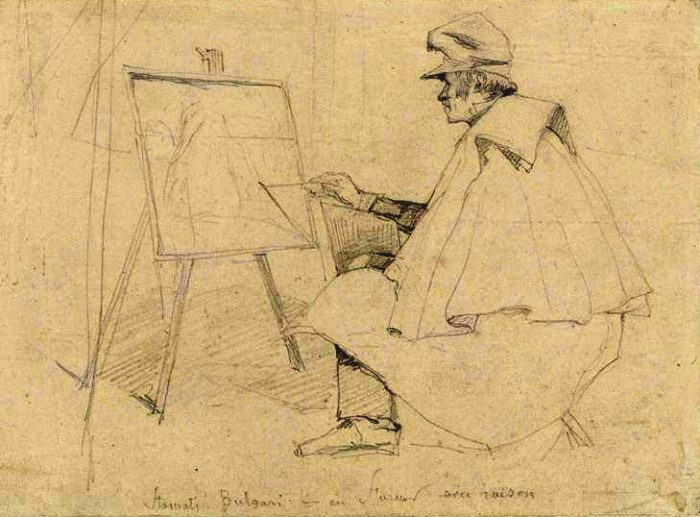Projects worked on by Voulgaris were the urban planning of Tripoli, the lower town of Patras, and the current historical centre of Nafplio and the improvement of the upper town of Patra. He was also responsible for moving refugees from their ‘disgusting huts’ in Nafplio to the Pronoia suburb.
Stamtis Voulgaris wrote: ‘[In May of 1828] I was engaged in the construction of huts outside the city of Nafplio, in which we would house the unfortunate families who were crowded into disgusting shacks located in the now most unhealthy part of the city. The regular nature of the roads of the square and the buildings in this neighbourhood, which I named Pronoia (), and the improvement works carried out in Nafplio would be used as prototypes in the cities that were built later.
The plague that was ravaging the country at that time and which had reached the outskirts of Nafplio caused the destruction of the new neighbourhood. I then undertook to draw up a plan to extend the suburb which today bears this name. I should not hide the fact that, at that time, the Governor, thanks to the proper hygiene measures and his vigilance and action, saved a large part of the population of Greece from this epidemic’.
A month later, Ioannis Capodistrias congratulated Voulgaris and, in reference to the urban planning of the historical centre of Nafplio, it is recorded that he began to express his desire to memorialise the revolution in public places:
‘I thank you for your correspondence and the fine plan for Nafplio. I approve the names you have given to the various streets and squares and I authorise you to name the remainder using names, as you have already done, in accordance with the principle of honouring the brave men who fell in service of their homeland. Any other criteria would be wrong and harmful…
Yours,
Capodistrias’
Poros, 22nd June/3rd July 1828


